The Cat Heat Cycle: Understanding and Managing
The cat heat cycle, also known as feline estrus, is a natural part of a female cat's reproductive process. Understanding cat heat is crucial for every cat owner, as it helps in recognizing the signs and managing your cat's behavior during this cycle month. In this article, we'll delve into the stages of the heat cycle, common symptoms of cat heat, and effective strategies for managing your female cat's heat to ensure her comfort and well being.
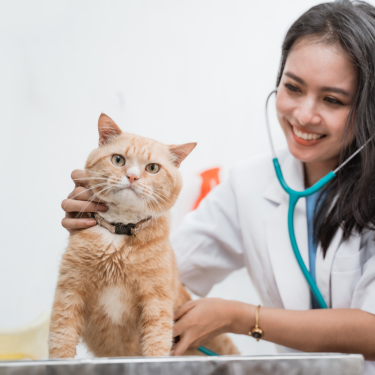
Just like most female mammals, cats experience monthly cycles. However, their 'periods' differ significantly from the human menstrual cycle. In this guide, you'll learn everything you need to know about the cat heat cycle, including how often they go into heat and whether or not it's advisable to let your feline experience an initial cat heat cycle before spaying.
Do cats have periods?
In a sense, yes, cats do have menstrual periods. This process, known as the cat heat or estrous cycle, is often referred to as being 'in heat.' Only unspayed female cats go through these cycles. Unlike humans, they reabsorb the old womb lining rather than shedding it, so bleeding is a very rare side effect.
When a queen female cat reaches the month age of sexual maturity, she will start to come into heat. The cat heat cycle typically occurs during the breeding season and can continue to repeat until the cat is spayed. The heat cycle for a female cat is induced by ovulation, and if she does not mate, she will continue to come into heat every few weeks.
The estrus phase lasts an average of 7 days, but the short period can vary depending on the cat breed and other factors. During this stage, a cat may roll on the floor and exhibit other behaviours that indicate she is in heat. It’s important for pet parents to talk to their vet about spaying to prevent unwanted pregnancy or issues like false pregnancy.
Allowing a female cat to come into heat multiple times can lead to repeat estrus cycles, which can be challenging to manage. Spaying your cat will help avoid the complications associated with the heat cycle and reduce the risk of a litter of kittens. If you notice your cat in heat, it’s best to keep her indoors to avoid mating and potential pregnancy during this period.
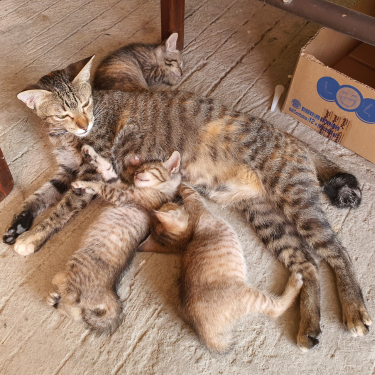
When do cats go into heat?
An unspayed kitten usually undergoes her first heat cycle around six months of age, though this can vary slightly from cat to cat. Since the estrous cycle begins so early, it's important to talk to your vet about spaying your cat sooner rather than later to avoid unwanted pregnancies. During the estrus phase, which can induce ovulation, the heat queen may show signs like rolling on the floor and increased vocalization. Allowing her outside during this time can lead to mating and potentially a litter of kittens. Spaying your cat before the cycle month starts again helps prevent the issues associated with repeated heat cycles and unwanted pregnancies.
How often do cats go into heat?
Cats are 'polyoestrous,' meaning they can go into heat multiple times a year throughout their fertile years. They may experience an estrous cycle every two to three weeks, which leads to the misconception that, like humans, cats are always fertile. The frequency of the heat cycle in cats is influenced by geographic and environmental factors, such as temperature and daylight hours. For example, a heat queen in warmer climates or those that spend most of their time indoors may go through heat cycles year round.
In contrast, the breeding season for felines in the Northern Hemisphere typically lasts from early winter to late autumn. It’s important to talk to your vet about spaying your cat to prevent a repeat of the estrus phase and avoid unwanted pregnancies or a litter of kittens. Allowing your cat outside during this period can induce ovulation and lead to a pregnant heat, making it crucial to manage their cycles carefully.
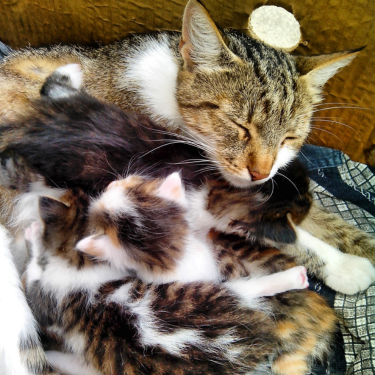
How long do heat cycles last in cats?
Heat cycles in cats, also known as cat estrus, typically last several days, with the average being around six days, though they can extend up to two weeks. During the breeding season, if your cat does not mate and induce ovulation, she will go out of heat and then re-enter estrus after a short break. These stages will continue to repeat day after day until the cat either becomes pregnant or is spayed. If mating occurs, she will exit the estrous phase within a day or two.
Signs of a heat cycle in cats
When your cat is in heat, she will primarily exhibit behavioral rather than physical signs. Here’s what to watch for:
1. Increased Vocalization
Many cats will ‘howl’ or make loud noises to attract potential mates.
2. Heightened Affection
Expect your cat to be extra affectionate, seeking more attention from you. She may rub against you and objects around the house.
3. Frequent Urination or Marking
Some cats may urinate more often or mark objects, as their urine contains pheromones and hormones signaling to male cats that they are ready to mate.
4. Tomcats in the Area
If there are male cats nearby, they may come into your garden or outside your home, likely marking their territory as well.
5. Small Amount of Blood
A tiny amount of blood is possible but uncommon. If you observe a significant amount, contact your vet right away.
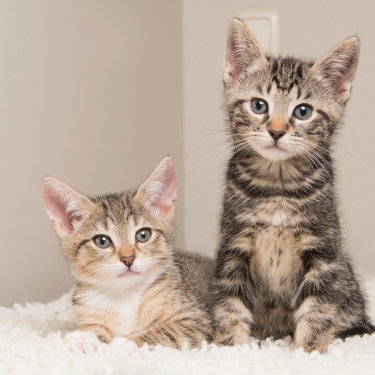
When can pregnancy occur during the heat cycle in cats?
Cats are induced ovulators, which means that mating is necessary to trigger the release of eggs from their ovaries. During the cat estrus phase, particularly in the breeding season, it can take three to four mating sessions within a 24 hour period for the cat heat cycle to induce ovulation. Throughout the heat cycle, a female cat may mate with multiple tomcats, and it’s possible for a single litter of kittens to have multiple fathers. This process continues until the last day of the heat cycle or until the cat is spayed.
Should I let my cat go through a heat cycle before spaying?
No, allowing a female cat to have a litter of kittens before spaying does not have any proven benefits. The notion that cats are friendlier after experiencing a cat estrus cycle and having kittens is simply a superstition. In reality, not spaying your cat increases the risk of cervical, mammary, and ovarian cancers and contributes to cat overpopulation. This risk persists throughout the cat heat cycle, including the breeding season. Spaying your cat before the last day of the heat cycle is crucial for her health. Thank you for reading our guide on the cat heat cycle!
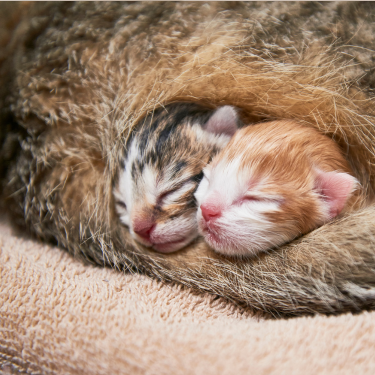
FAQ
1. Can a cat become pregnant during her heat cycle?
Yes, a cat can become pregnant during her heat cycle. The heat cycle, also known as estrus, is the period when a female cat is fertile and ready to mate. During this time, if she mates with a male cat, fertilization of her eggs can occur, leading to pregnancy. The heat cycle is specifically the time when she is most receptive to mating and capable of conceiving.
2. Can a single litter of kittens have multiple fathers?
Yes, a single litter of kittens can have multiple fathers if the female cat mates with several male cats during her heat cycle.
3. Can environmental factors affect a cat’s heat cycle?
Yes, environmental factors such as temperature and daylight hours can influence the frequency of a cat’s heat cycles. Cats in warmer climates or those that spend most of their time indoors may experience heat cycles year round.
4. What should I do if my cat is acting unusually during her heat cycle?
If your cat’s behavior during her heat cycle is causing concern, consult your vet. They can provide advice on managing her behavior and discuss options for spaying if appropriate.
5. How long does it take for a cat’s heat cycle to end after spaying?
Once a cat is spayed, the heat cycle immediately stops because the ovaries and uterus are removed. The behavioral signs of heat should cease right away, and recovery from the surgery typically takes a few weeks.
















